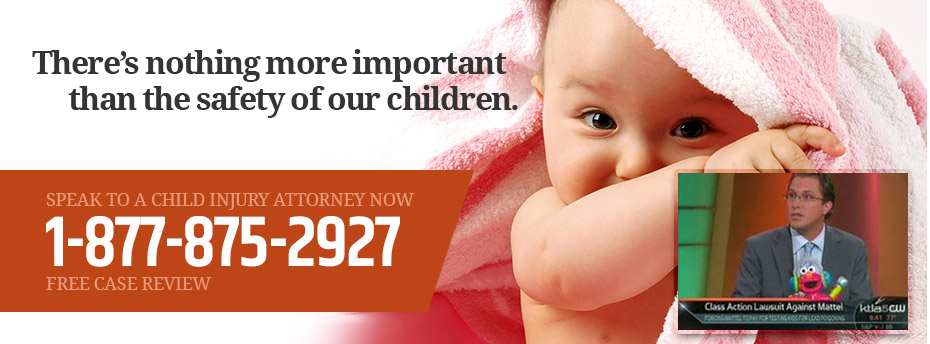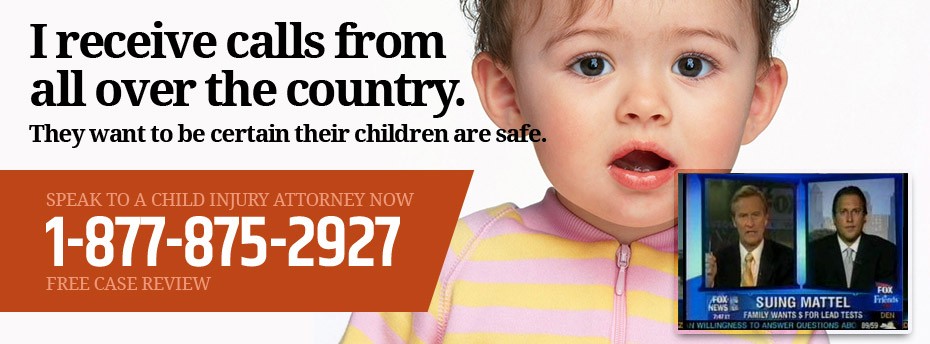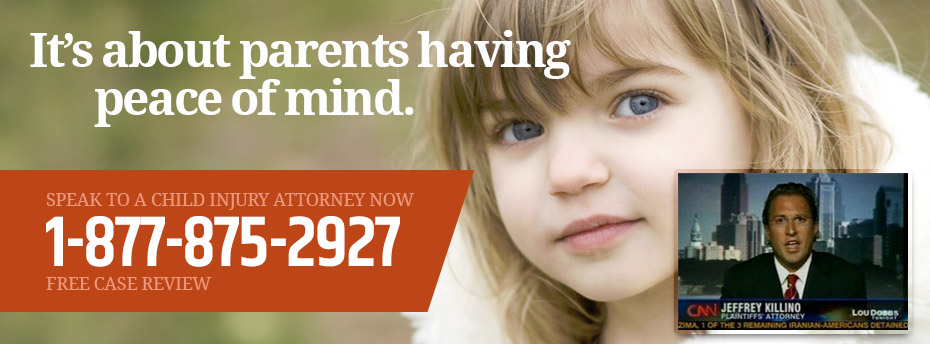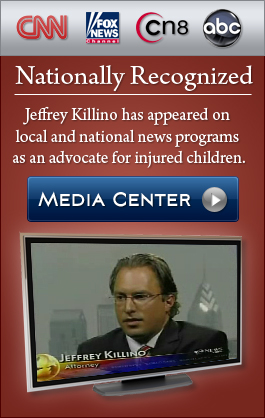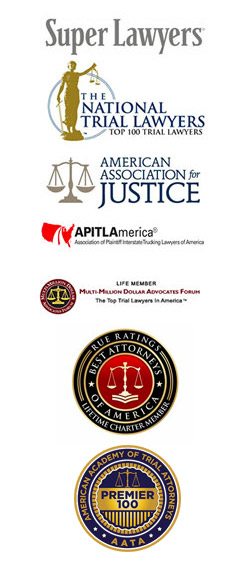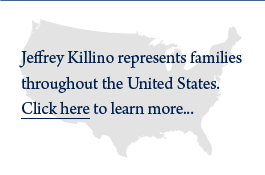From the backyard to the nursery, hammocks seem to be everywhere these days.
Whether you’re looking for a sure-fire way to lull a baby to sleep, a comfortable spot for an afternoon nap on a warm summer day, or a convenient means of storing children’s toys, there’s a hammock that’ll fit the bill.
But while it’s easy to see why hammocks have appeal, they aren’t without risk. In fact, according to the U.S. Consumer Products Safety Commission (CPSC), hammocks of all types cause thousands of injuries and wrongful deaths every year.
Our Child Injury Lawyers have extensive experience representing victims of preventable accidents and defective products, including baby sleeping hammocks, child hammock pods and hammock swing chairs, toy hammocks, and outdoor and backyard hammocks, earning national recognition for their aggressive pursuit of justice on behalf of injured children and their families.
All About Hammocks
When most people think of a hammock, they picture a piece of canvas or rope mesh suspended between two poles, trees, or walls by cords at each end. But there are various types of hammocks on the market today, including those specifically designed for infants and children.
- Baby Sleeping Hammocks: Manufacturers claim an infant hammock mimics sleep in the womb and helps newborn infants with sleeping difficulties. Some baby sleep hammocks hang from their own stand, while others are suspended over a crib or pack-and-play.
- Baby Shopping Cart Hammocks: These infant hammocks are suspended over a shopping cart so a baby can accompany their parent or caregiver into a store.
- Children’s Hammock Swing Chair or Kid’s Hammock Pods: These are indoor or outdoor hammocks designed for kids to use as a swing or reading nook.
- Toy Hammocks: These hammocks are designed to store stuffed animals off the floor.
- Backyard and Camping Hammocks: These traditional hammocks are suspended between two trees or poles for outdoor sleeping.



Hammock Injuries and Deaths
Unfortunately, hammocks can be quite dangerous, especially if they’re defectively designed or manufactured or used incorrectly due to inadequate instructions or warnings. In fact, according to the CPSC, hammocks injure or kill over 3,000 people in North America annually.
Baby sleep hammocks, for example, don’t come close to meeting the criteria for safe infant sleep.
“[Hammocks are] an extremely dangerous sleep surface,” Dr. Gina Posner, a pediatrician at MemorialCare Orange Coast Medical Center in California, recently told Healthline. “Numerous studies have shown that to decrease the risk of SIDS, the baby needs to sleep on his or her back on a flat, firm surface. The crib hammock is neither firm or flat and that can cause the baby to become entrapped in it if he or she rolls.”
Toy storage hammocks are especially dangerous, as they lack a spreader bar to prevent child entanglements, an occurrence that could result in strangulation. Any improperly secured hammock – including backyard hammocks, children’s hammock swing chairs, and kid’s hammock pods — poses a fall hazard. In some cases, trees or support poles have even fallen onto a hammock’s occupant, resulting in severe injury or accidental death.
Recent Hammock Recalls
The CPSC has recalled numerous hammocks in the past, including products that caused serious or fatal injuries to children.
Net Mini-Hammock Recall

In 1996, 10 manufacturers recalled over 3 million light-weight, net mini-hammocks that lacked spreader bars to hold the hammocks open. For years, mini-hammocks and baby-hammocks that do not have the spreader bars have been known to cause strangulation death in children. According to the CPSC, the mini-hammocks can suddenly become twisted around a child’s neck and strangle the child. This can happen when children are attempting to climb into or out of, or are playing on, or swinging on mini-hammocks like swings. Between 1984 and 1995, the CPSC received reports of 12 children between the ages of 5 and 17 who became entangled and died when using these types of hammocks. A 7-year-old girl also suffered permanent brain damage after becoming entangled, and a mother resuscitated her 5-year-old son after he became trapped in a mini-hammock.
Amby Baby Motion Bed/Hammock Recall

In December 2009, Amby Baby USA recalled 24,000 Baby Motion Beds/Hammocks following two infants’ suffocation deaths. “The side-to-side shifting or tilting of the hammock can cause the infant to roll and become entrapped or wedged against the hammock’s fabric and/or mattress pad, resulting in a suffocation hazard,” the CPSC said.
MamaLittleHelper Baby Hammock Recall

In August 2010, MamaLittleHelper recalled hundreds of baby sleeper hammocks after receiving three reports of hammocks becoming unbalanced. In one case, a 2-month-old infant rolled to the side corner of the hammock and was found crying face down.
MamaLittleHelper Hammock Stand Recall

That same month, MamaLittleHelper recalled a small number of infant and toddler hammock stands that could break and cause a baby to fall. A four-month-old infant girl fell from a hammock when the metal stand broke, but she was not injured.
Bed Bath and Beyond Recall

In September 2014, Bed Bath and Beyond recalled nearly 14,000 Destination Summer Hammock Stands because the hooks that attached the hammock to the stand could bend or break. The retailer received 13 reports of hook failure, resulting in consumers falling to the ground and injuring various body parts.
BYA Sports Hammock Recall

BYA Sports recalled hundreds of outdoor hammocks in August 2016 because of a defective weld ring.
The firm received two reports of ring failure, including one report of bruising from a fall.
Hammock Safety Tips
Never place a baby in a hammock to sleep. Instead, follow the American Academy of Pediatrics’ ABC’s for Safe Sleep:
- A for “Alone”: Your baby should sleep alone and not surrounded by any toys, stuffed animals, or blankets.
- B for “Back”: Place infants flat on their back (something a hammock prevents) to sleep.
- C for “Crib:” Babies should only be put to sleep in safety-certified crib with a firm mattress surface and tightly fitted sheet — no co-sleeping or other arrangements.
When using any hammock:
- Always inspect your hammock and hanging gear for signs of wear, such as tears, holes, fraying, U.V. fading, and weakness. Pay special attention to all hanging points.
- Always check the weight limit of your hammock.
- If you’ve never set up your hammock before, carefully read the safety and set up instructions before doing so.
- Never suspend a hammock from dead trees or saplings. While they may appear sturdy, there’s no way to know if they’ll support the weight of an occupied hammock.
- Before hanging a hammock, look up and avoid trees with large, dead branches, as a strong gust of wind could cause any unstable branches to fall on the hammock and its occupant.
- Don’t hang a hammock too high off the ground. You should be able to easily enter the hammock and avoid serious injury in the event of a fall.
- A child’s hammock should never be more than two feet off the ground.
- Never place any hammock above dangerous terrain or objects, such as slopes, rocks, and water bodies.
- Don’t let anyone bounce around or jump inside a hammock, especially kids.
- To prevent child entanglements, avoid hammocks with too much material, netting, and holes, as well as those that lack spreader bars.
- Infants and toddlers should not play in any type of hammock. Older children should only be allowed to use a hammock once they’re able to get in and out safely and understand hammock safety rules. Even then, they should not be permitted to use a hammock unsupervised.
Contact an Experienced Child Injury Lawyer
As a nationally recognized Child Injury Lawyer, Jeffrey Killino has extensive experience litigating involving dangerous product lawsuits and consistently wins highly-favorable verdicts and settlements for his clients. While these recoveries can’t be construed as predictive of your case’s outcome, he will work diligently and aggressively to ensure you and your family receive the compensation you deserve. If your son or daughter was injured while using a hammock please do not hesitate to contact us at 1-877-875- 2927.
